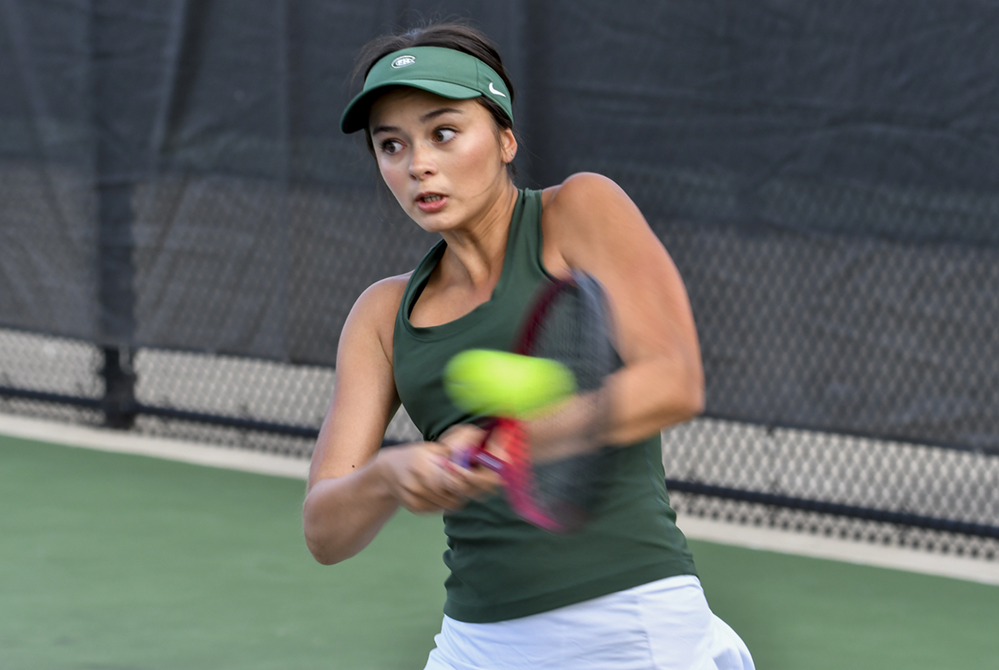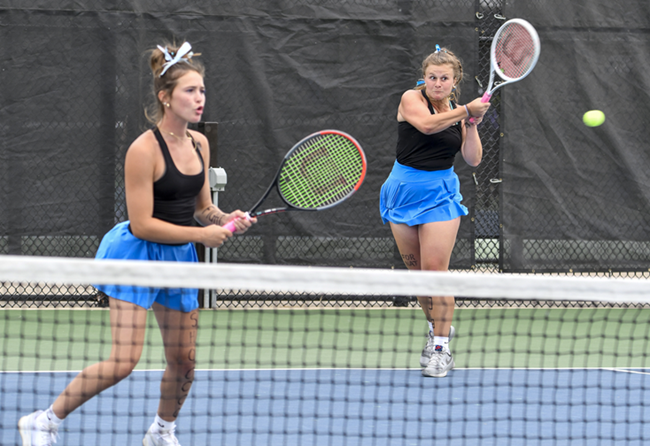
Casting Lines for Future Tournaments
August 12, 2016
By Jack Roberts
MHSAA Executive Director
The MHSAA is best known to the public for the tournaments it conducts to conclude the fall, winter and spring seasons each school year.
These tournaments, the first and largest program of the MHSAA, have survived the Vietnam War, the Korean conflict and two World Wars. They have survived the technology bubble, the housing collapse, the energy crisis and the Great Depression.
MHSAA tournaments existed at the dawn of aviation and at the time of our nation’s lunar landing. Popes, presidents and governors have changed and changed again and again, and MHSAA tournaments roll on year after year.
But the sense of tradition and permanence and inevitability of MHSAA tournaments doesn’t dissuade us from asking questions about our tournaments, even some of the most basic questions. Here are two.
Question #1
I have long been and will always be an advocate for a Ryder Cup format for the MHSAA Golf Finals, and a team tennis approach to the MHSAA Tennis Finals; but 90 years of tradition is hard to overcome. Might this be a more exciting format? Could it be co-ed? Could it reverse the decline in boys tennis participation, and increase girls golf participation? Wouldn’t it be fun to try?
Periodically, the International Olympic Committee requires each of the designated Olympic sports to defend its status, to state its case why the sport should remain a part of the Olympic program. Then, after a series or votes that retain one sport at a time, the IOC drops the sport that makes the weakest case. It does so to make room for one of the previously unlisted sports that makes the best case for inclusion.
This would appear to keep the existing Olympic sports on their toes, and to keep the Olympic movement fresh and reflective of modern trends in sports.
While I would not enjoy the controversy, I can see the potential for some positive results if the MHSAA were to invoke the same policy for determining the 14 tournaments it will provide for girls and the 14 for boys.
This might cause us to consider more deeply what a high school sport should look like, or at least what an MHSAA tournament sport should stand for.
On the one hand, we might be inclined to drop tournaments for those sports that involve mostly non-faculty coaches and non-school venues, or require cooperative programs to generate enough participants to support a team, or resort almost entirely to non-school funding, or cater to individuals more than teams.
Or perhaps this process would cause policymakers to forget traditional thinking and ask: “In this day and age, should we shake off traditional notions of sport and consider more where modern kids are coming from?” That might mean fewer team sports and more individual sports, more “extreme” sports like snowboarding and skateboarding, and more lifetime sports, meaning not just golf and tennis and running sports, but also fishing and even shooting sports.
Currently, MHSAA policy states that the MHSAA will consider sponsorship of a tournament series for any sport which 64 member schools conduct on an interscholastic basis as a result of action by the governing boards of those schools.
Should the only question be how many schools sponsor a sport, or must an activity also have certain qualities and/or avoid certain “defects?” What should an MHSAA tournament sport look like and stand for?
Question #2
Bristling from criticism that his association is a money-grabbing exploiter of children, my counterpart in another state said, “If we were running our programs just to make money, we would do very many things very differently.” I knew exactly what he meant.
Because we care about the health and welfare of students, because we mean what we say that the athletic program needs to maximize the ways it enhances the school experience while minimizing academic conflicts, and because we try to model our claim that no sport is a minor sport when it comes to its potential to teach young people life lessons, we operate our programs in ways that make promoters, marketers and business entrepreneurs laugh, cry or cringe.
If money were the only object, we would seed and select sites to assure the teams that attracted the most spectators had the best chance to advance in our tournaments, regardless of the travel for any team or its fan base. If money were the only object, we would never schedule two tournaments to overlap and compete for public attention, much less tolerate three or four overlapping events. If money were the only object, we would allow signage like NASCAR events and promotions like minor league baseball games.
Those approaches to event sponsorship may not be all wrong; they’re just not all right for us. And we will live with the consequences of our belief system.
During a typical school year, more than 20 percent of the MHSAA’s 2,097 District, Regional and Final tournaments lose money. Not a single site in golf, skiing or tennis makes a single penny. In no sport did every District, Regional and Final site have revenue in excess of direct expenses.
In fact, in only three sports – boys and girls basketball and football – is revenue so much greater than direct expenses overall that it helps to pay for all the other tournaments in which the MHSAA invests.
That’s right: invests. When we present our budget to our board, we talk about the MHSAA’s investment in providing tournament opportunities in all those sports and all those places that cannot sustain the cost of those events on their own. How much is this investment worth to students, schools and society?
These two are core questions that require our focus far in advance of talk about scheduling, site selection, seeding and the myriad matters that too often hijack our time and attention.

Forest Hills Rules D2: FHC's Ohlman Repeats, FHN Takes Back Team Title
By
Keith Dunlap
Special for MHSAA.com
June 1, 2024
BYRON CENTER — The last day of actual school this year for Grand Rapids Forest Hills Central senior Lily Ohlman might have been May 6. But from a tennis perspective, it can be argued that her last day of school was May 4 — when she learned a few things that paid off during her final high school tournament.
It was then that Ohlman suffered a three-set loss to Megan Sullivan of Farmington Hills Mercy (10-8 in the third-set tiebreak). Earning a rematch with Sullivan in the No. 1 singles championship match at the MHSAA Lower Peninsula Division 2 Finals on Saturday, Ohlman tried to figuratively go to school and do her homework from that last match with Sullivan.
“Megan has an extremely good forehand,” Ohlman said. “She really hurt me with that in the last match. Going into this, I just tried as hard as I could not to hit it to her forehand. When I did, I tried to hit it deep and stuff.”
Ohlman certainly played like someone who did her homework from that match as well, as she earned her second straight singles title with a 6-3, 6-3 victory over the junior from Mercy.
Ohlman reached Sullivan by surviving Ana Cheng of Mattawan in the semifinals, 6-2, 4-6, 6-3.
“I have thought about this every day for the past year since I won states for the first time,” Ohlman said of trying to repeat. “It’s been like a true dream come true for my tennis career.”
While Ohlman brought home an individual title for Forest Hills Central, rival Forest Hills Northern claimed the team championship for the third time over the last four years. The Huskies netted 29 points to edge 2023 champion Birmingham Seaholm, which finished with 23.
 Northern had players in five flights advance to finals, with four of those flights producing championships.
Northern had players in five flights advance to finals, with four of those flights producing championships.
FHN’s title was punctuated when the No. 1 doubles team of Ryan Morey and Paige McKenzie defeated Seaholm’s team of Jenna Ting and Katie Slazinski in a thrilling final, 6-3, 5-7, 6-4. Northern actually had the team title clinched by that point, but head coach Steven Olson didn’t want his players to know that.
“I don’t want them to back off because they think the team has already won it,” he said. “I want them to think they are still hunting for a title the entire time.”
Huskies junior Andrea Wang defeated Keira Kirkland of Farmington Hills Mercy, 5-7, 7-6 (2), 6-2 to win at No. 2 singles, sophomore Harriet Ogilvie captured the title at No. 3, and the team of Lauren Jaklitsch and Morgan McKenzie won at No. 2 doubles.
Olson guided his team to a Finals title in his second year as head coach after taking over for Dave Sukup, who led the program for 49 years before retiring. Northern had fallen to No. 2 behind Seaholm in the final regular-season coaches rankings. And then the Huskies lost their No. 1 singles player Nathalie Lanne to a torn ACL last week.
Her replacement, Natalia Acevedo, managed to win a first-round match to earn a crucial point despite not being seeded.
Also stepping up was sophomore Aanya Dogra, who entered the tournament unseeded at No. 4 singles. Dogra recorded upsets of No. 3 seed Elisa Costeux of Mattawan and No. 2 seed Maddy Youngblood of Grosse Pointe South before falling in the championship match to No. 1 seed Gabby Owens of Farmington Hills Mercy, 6-0, 6-2.
Still, Dogra’s run earned some major points for the Huskies.
“The rest of the team just stepped up and performed,” Olson said. “It’s been a wild weekend, but I’m very proud of these girls.”
PHOTOS (Top) Forest Hills Central’s Lily Ohlman returns a volley during her No. 1 singles championship match Saturday. (Middle) Forest Hills Northern’s Paige McKenzie, right, with partner Ryan Morey, sends back a powerful volley at No. 1 doubles. (Click for more from High School Sports Scene.)

